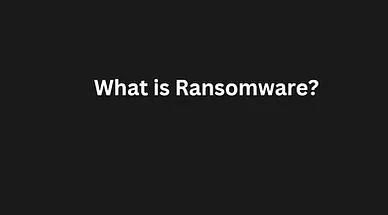Ransomware has emerged as one of the most insidious and widespread cyber threats in recent years, causing significant financial and operational disruption for individuals and organizations alike. Understanding the nature of ransomware and implementing effective preventive measures are essential steps in safeguarding your data and minimizing the risk of falling victim to these attacks.
Educate yourself on the latest ransomware trends and techniques to stay ahead of cybercriminals.
Implement robust cybersecurity practices to protect your data and ensure business continuity.
Understanding Ransomware: A Modern Cyber Threat
Ransomware is a type of malicious software (malware) designed to encrypt files on a victim’s device, rendering them inaccessible without a decryption key. Attackers typically demand a ransom, often in cryptocurrency, to provide the decryption key. The consequences of a ransomware attack can be severe, including financial loss, data breaches, and reputational damage. Ransomware attacks have targeted a wide range of entities, from individual users to large corporations, healthcare institutions, and even government agencies.
Common Methods of Ransomware Infection
Phishing Emails: One of the most common methods of ransomware infection is through phishing emails. These emails often contain malicious attachments or links that, when clicked, download and install the ransomware on the victim’s device.
Drive-by Downloads: Infected websites can automatically download malware onto a user’s device without their knowledge. This often occurs when users visit compromised websites or click on malicious ads.
Exploiting Vulnerabilities: Cybercriminals exploit known vulnerabilities in software to gain unauthorized access and deploy ransomware. Outdated software and unpatched systems are particularly vulnerable to these types of attacks.
Malicious Software Bundles: Some ransomware is distributed through bundled software, often found on untrustworthy websites or torrent sites. Users may unknowingly download and install the ransomware along with other software.
Types of Ransomware
Encryptors: These ransomware variants encrypt files on the victim’s device, making them inaccessible without a decryption key. Examples include CryptoLocker and Locky.
Screen Lockers: These lock the user out of their device, displaying a message demanding a ransom. Examples include WinLock and Police Ransomware.
Double Extortion Ransomware: This type not only encrypts data but also threatens to leak sensitive information if the ransom is not paid. Examples include Maze and REvil.
Ransomware-as-a-Service (RaaS): This model allows cybercriminals to purchase or lease ransomware tools and infrastructure, making it easier for even less technically skilled attackers to launch ransomware campaigns.
Preventive Measures Against Ransomware Attacks
Regular Software Updates: Keeping your operating system, applications, and security software up to date is crucial. Developers frequently release patches to address vulnerabilities.
Antivirus and Anti-Malware Programs: Installing reliable antivirus and anti-malware software can detect and block ransomware before it infects your system.
Data Backups: Regularly backing up your data to external drives or cloud services ensures you can recover your files without paying a ransom.
Employee Training: Educating yourself and your team about the dangers of phishing emails and suspicious links can prevent accidental infections.
Multi-Factor Authentication (MFA): Adding an extra layer of security by requiring multiple forms of verification can prevent unauthorized access.
End-to-End Encryption: Encrypting data in transit ensures that even if it is intercepted, it remains unreadable to attackers.
Regular Security Audits: Conducting regular security audits and penetration testing can identify and address vulnerabilities in your systems.
Network Segmentation: Segmenting your network can limit the spread of ransomware if an infection occurs.
Access Controls: Implementing strict access controls and the principle of least privilege can reduce the risk of unauthorized access.
Incident Response Plan: Having a well-defined incident response plan can help you quickly and effectively respond to a ransomware attack, minimizing downtime and damage.
What to Do If You Suspect a Ransomware Attack
If you suspect that your device has been infected with ransomware, take the following steps:
Isolate the Infected Device: Disconnect the device from the network to prevent the spread of the ransomware.
Do Not Pay the Ransom: Paying the ransom encourages further attacks and does not guarantee the safe return of your data.
Contact Authorities: Report the attack to the appropriate authorities, such as the FBI or local law enforcement.
Restore from Backup: If you have backups, restore your data from a clean backup.
Run a Security Scan: Perform a full system scan with your security software to identify and remove any remaining malware.
Update and Patch: Ensure all software and systems are up to date with the latest patches.
Review Security Policies: Conduct a review of your security policies and practices to identify and address any weaknesses.
Case Studies: Real-World Ransomware Attacks
WannaCry: In May 2017, the WannaCry ransomware attack affected over 200,000 computers across 150 countries. The attack exploited a vulnerability in the Windows operating system, highlighting the importance of regular software updates.
Colonial Pipeline: In May 2021, the Colonial Pipeline, a major fuel pipeline in the United States, was hit by a ransomware attack. The attack led to significant operational disruptions and highlighted the critical need for robust cybersecurity measures in critical infrastructure.
Kaseya: In July 2021, the Kaseya ransomware attack targeted managed service providers and their clients, affecting thousands of businesses. The attack underscored the importance of supply chain security and the need for comprehensive incident response plans.




